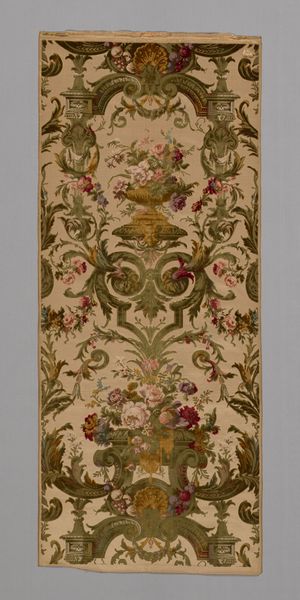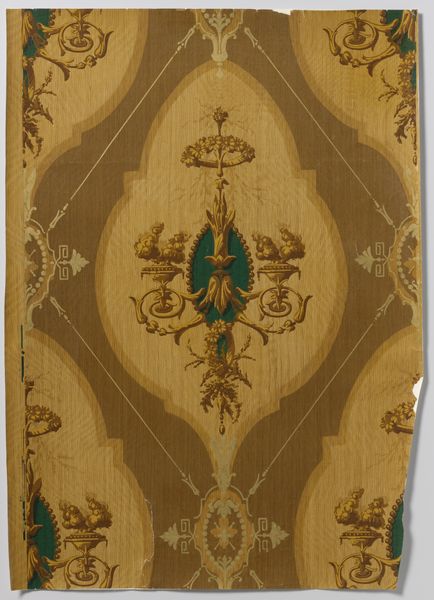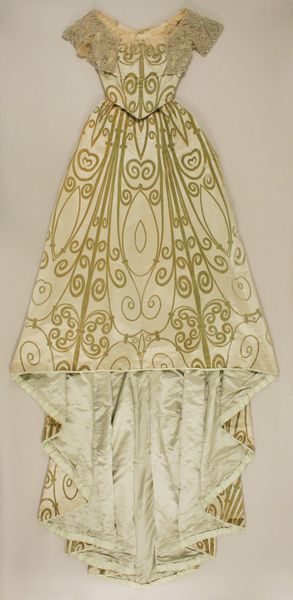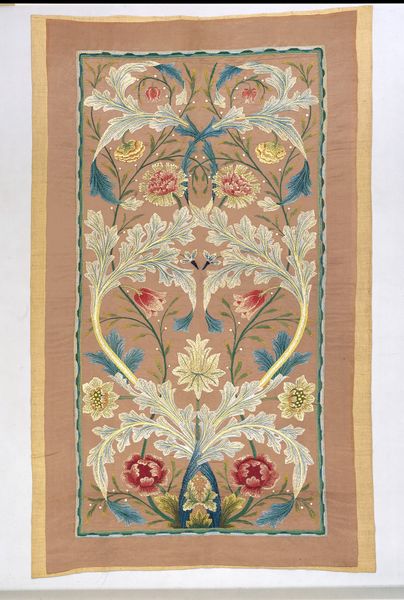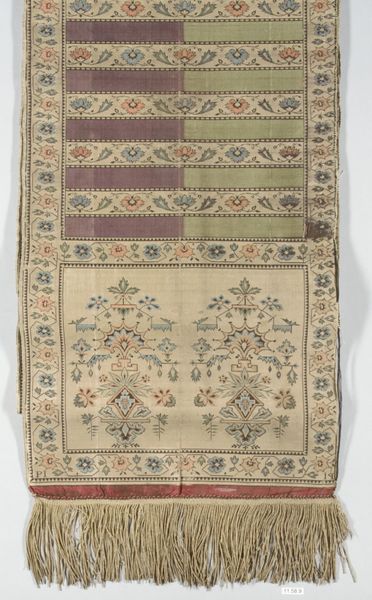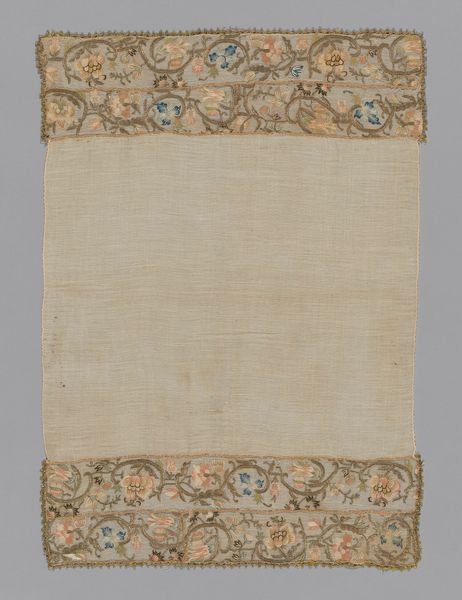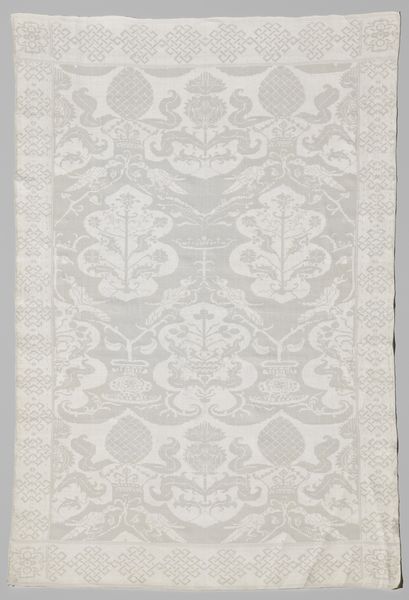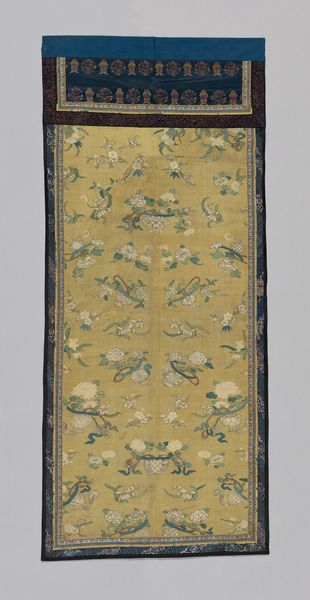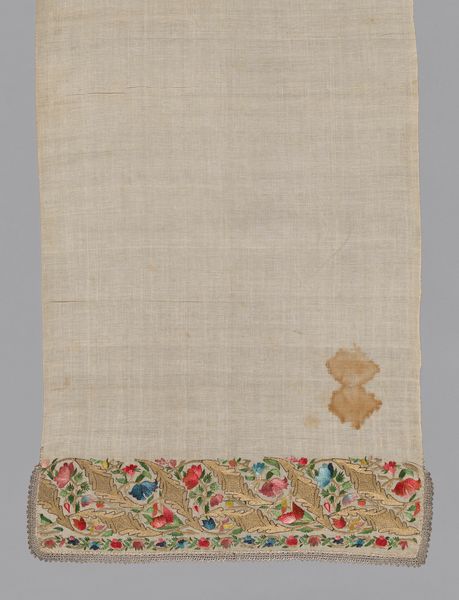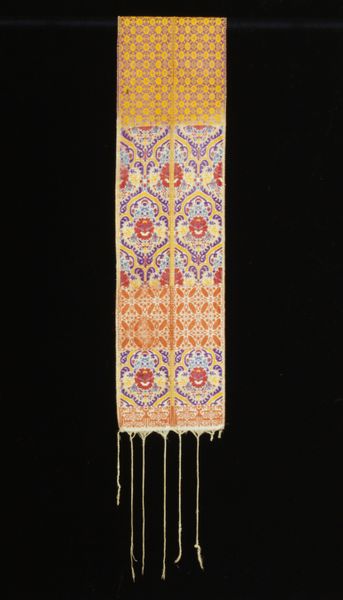
Kazuifel van wit brokaat: op rugkruis een ingeweven driehoek in stralenkrans en met natuurlijk gekleurde druiven en rozen in vaas 1839
0:00
0:00
Dimensions: length 100.0 cm, length 108.0 cm, width 70.0 cm
Copyright: Rijks Museum: Open Domain
This chasuble was made from white brocade, featuring an interwoven triangle within a halo, along with naturally colored grapes and roses in a vase. Vestments like this one were not merely garments; they were potent symbols of religious authority and identity. Consider the fabric itself, brocade. It speaks of wealth and status, reflecting the church's position in society. The cross is central, yet softened by the inclusion of flowers, suggesting themes of love, compassion, and the natural world, and perhaps revealing an effort to make the church more relatable. The triangle could be a symbol of the Holy Trinity, but consider alternative interpretations related to enlightenment. How does this elaborate garment make you feel? Does it evoke a sense of reverence? What does it say about the relationship between the church, its followers, and the divine?
Comments
No comments
Be the first to comment and join the conversation on the ultimate creative platform.

